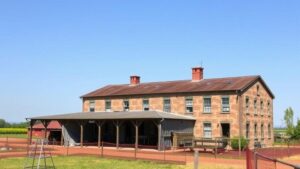How LiDAR Mapping Technology Helps Uncover Forgotten Historical Sites
How LiDAR Mapping Technology Helps Uncover Forgotten Historical Sites
Light Detection and Ranging (LiDAR) technology has revolutionized archaeological research by enabling the comprehensive mapping of landscapes, revealing forgotten historical sites that were previously obscured by vegetation or other natural elements. This article explores the mechanisms of LiDAR technology, its applications in archaeology, and notable case studies that illustrate its effectiveness in uncovering historical sites worldwide.
Understanding LiDAR Technology
LiDAR is a remote sensing method that uses light in the form of a pulsed laser to measure variable distances to the Earth. When these laser pulses hit the ground, they are reflected back to the sensor, allowing researchers to create high-resolution, three-dimensional topographic maps.
The technology operates using a combination of aerial platforms (such as drones or planes), laser instruments, GPS, and advanced software processing techniques. This allows archaeologists to:
- Generate detailed surface models.
- Identify subtle variations in terrain that may indicate human activity.
- Penetrate dense vegetation, which can obscure less visible landmarks.
Applications in Archaeology
LiDAR technology is particularly useful in archaeological studies for several reasons:
- Vegetation Penetration: LiDAR can effectively see through tree canopies, revealing hidden features such as mounds, walls, and ancient pathways.
- Comprehensive Mapping: LiDAR can cover large areas quickly, allowing for extensive surveys that would take much longer using traditional survey methods.
- Time and Cost Efficiency: The rapid data collection and processing capabilities drastically reduce the cost and labor associated with ground surveys.
Case Studies: Notable Discoveries
Several significant archaeological discoveries have been made possible through LiDAR technology:
The Maya City of Caracol
In 2013, researchers employed LiDAR to map the ancient Mayan city of Caracol, located in Belize. The data revealed not only the extent of the city but also previously unknown structures, including causeways, ceremonial centers, and residential complexes. These findings suggest that Caracol was much larger and more complex than previously believed, with a population potentially exceeding 150,000.
Angkor Wat, Cambodia
LiDAR has also been employed in Cambodia’s Angkor region, leading to remarkable insights into the urban planning and agricultural practices of the Khmer Empire. A 2015 study revealed a vast network of roads, canals, and reservoir systems that supported a sophisticated civilization in the 9th to 15th centuries. This evidence highlights the advanced engineering capabilities of the Khmer and transforms our understanding of their social organization.
Challenges and Limitations
While LiDAR is a powerful tool, it is not without challenges:
- Data Interpretation: The volume of data generated can be overwhelming, requiring specialized skills and software for meaningful analysis.
- Initial Costs: The acquisition and operation of LiDAR technology can be expensive, potentially limiting accessibility for smaller research initiatives.
- Environmental Factors: Weather conditions such as heavy rain or fog can impact the quality of data collected.
Future Directions and Implications
The future of LiDAR technology in archaeology appears promising, with constant advancements in technology leading to improved accuracy, efficiency, and accessibility. As costs decrease and technology becomes more widely available, more researchers will be able to utilize LiDAR in their work. integration of artificial intelligence in data analysis may further streamline the identification of historical features, enhancing our capability to uncover new sites.
Also, as environmental concerns grow, LiDAR could aid in heritage management by mapping sites at risk, allowing for better preservation strategies. This proactive approach can protect invaluable historical sites for future generations.
Conclusion
LiDAR technology has significantly impacted the field of archaeology, unveiling forgotten historical sites and enhancing our understanding of past civilizations. Through examples from Caracol and Angkor Wat, we see that the potential of LiDAR extends beyond mere survey techniques; it reshapes our perspective on historical complexity and societal development. As researchers continue to refine this technology, it promises to reveal even more of the hidden narratives that shape our shared heritage.

